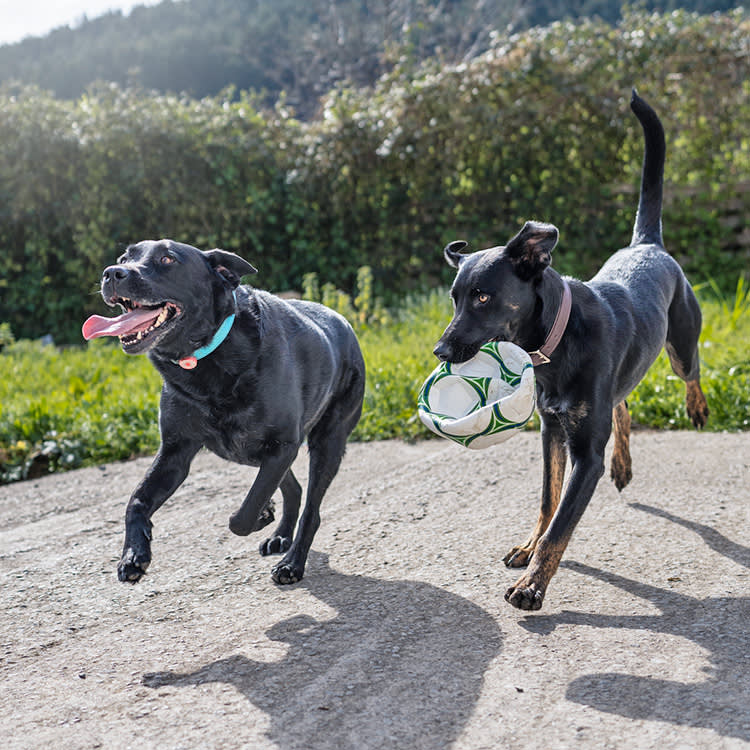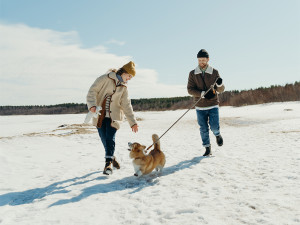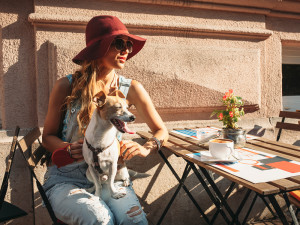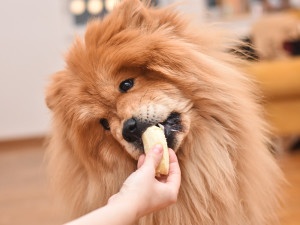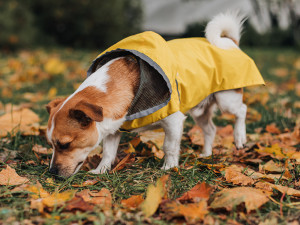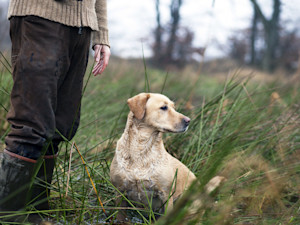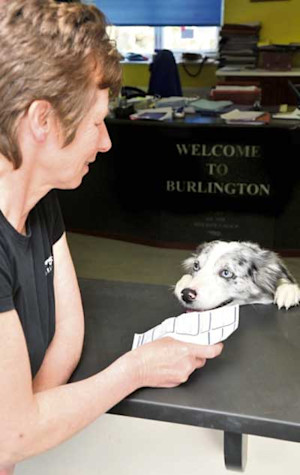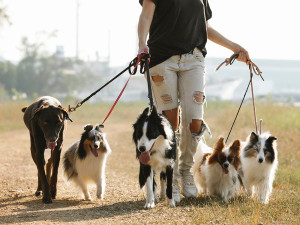5 Types of Enrichment Every Dog Needs
A well-enriched dog is a happy dog – and who wouldn’t want that?
We all want our dogs to live their best lives – filled with belly rubs, long walks and a healthy dose of fun. But beyond the basics, ensuring your pup’s well-being involves providing a range of enriching experiences. Canine enrichment isn’t just a fancy buzzword; it’s an essential part of your dog’s physical, mental and emotional health. As Waltham Petcare Science Instituteopens in a new tab succinctly puts it, “Enrichment should be seen as a necessity, not a luxury, in ensuring the welfare of animals.”
At its core, enrichment is all about providing experiences that allow dogs to engage in natural behaviours, keeping them mentally and physically stimulated, and, of course, happy as Larry. Much like humans, dogs thrive when their days are spiced up with a bit of variety and challenge. “Enrichment is key to enhancing the well-being of animals by providing stimulating environments and promoting natural behaviours,” says Waltham.
littleKin™ is Kinship’s home just for puppy and kitten parents. Bop over to check out expert advice, new pet tools, and special deals—all curated for your newest family member.
opens in a new tabEach dog is unique, so their enrichment needs will vary. The best approach is to provide a balanced mix of these five types of enrichment, adjusting based on what your dog enjoys and benefits from the most. Next time you’re planning your dog’s day, consider how you can incorporate these five types of enrichment. After all, a well-enriched dog is a happy dog – and who doesn’t want that?
Social enrichment
Let’s start with the fact that dogs are social creatures. Even if your pooch is more of a lone wolf, they still benefit from some form of social interaction. Social enrichment involves giving your dog opportunities to interact with other dogs, animals and humans in ways that are safe and enjoyable for them.
Socialisation is crucial for dogs, especially during their puppy years. But it doesn’t stop once they’re all grown up. Whether it’s regular playdates with a fellow four-legged friend, attending a doggy daycare or even just saying a friendly hello to the neighbour’s cat, social interactions can help prevent behavioural problems such as anxietyopens in a new tab and aggressionopens in a new tab.
Social enrichment is essential for dogs and can help individuals cope with stress. This is particularly important for dogs that may struggle with being left alone, as well as for those that might be a bit overenthusiastic about meeting new friendsopens in a new tab. The right balance of social interactions can help your dog learn what’s appropriate, reducing the likelihood of unwanted behaviours.
“Dogs are a social species so require interactions with either conspecifics (other dogs), other pets and/or people,” says Dr Tammie King, a senior research manager at Waltham Petcare Science Institute.
“They tend to form close bonds with others and it is important to maintain these positive social interactions to prevent individuals becoming afraid or losing the ability to know how to interact appropriately with others, which can cause tension.”
However, not all dogs are the same. Some might love being the life of the party, while others might prefer a more low-key interaction. It’s important to tailor social experiences to your dog’s personality. For example, a dog that’s a bit more reserved might enjoy one-on-one playtime with a trusted human more than a chaotic doggy meet-up.
Whether it’s a game of fetch with you, a cuddle on the sofa or even time spent learning new tricks, these activities reinforce your bond and keep your dog mentally stimulated.
How to implement
If your dog is a bit of a social butterfly, organise regular playdates with trusted dogs and their parents. On the flip side, if your dog is more on the introverted side, focus on quality rather than quantity. Short, positive interactions can be just as enriching as a full day of rough-and-tumble.
Food enrichment
If there’s one thing most dogs love, it’s food. But before you start handing out treats like there’s no tomorrow, let’s talk about how you can turn feeding time into an enriching experience.
Food enrichment is all about encouraging dogs to think, problem-solve and even work for their food. It’s more than just a means to an end – it’s a way to tap into their natural foraging instinctsopens in a new tab. Remember, in the wild, dogs (or their wolf ancestors, to be exact) didn’t have their meals served on a silver platter. They had to sniff, dig and chase to get their dinner.
Think puzzle feedersopens in a new tab, snuffle mats, hand feeding or even hiding small portions of their meal around the house for a little scavenger huntopens in a new tab. These handy tools make your dog’s brain work while they eat, keeping their brain busy and helping alleviate boredom. Plus, the variety in texture, flavour and smell can enhance their eating experience, making mealtimes something to look forward to.
It’s not just about fun, though – dietary enrichment has tangible benefits. Tailoring your dog’s diet to their individual needs can improve not just their physical health but their emotional well-being too. According to Waltham, “Providing opportunities for food foraging can reduce anxiety and boredom in dogs, leading to a more relaxed and happy pet.”
“Providing enrichment opportunities that involve food, eg, foraging or problem-solving tasks via puzzles or food dispensing toys, are great ways to add variety and mental stimulation at meal times and prevent boredom,” says Dr King. “Just like people, keeping our brains active is a great way to promote optimal mental healthopens in a new tab which has been demonstrated to maintain cognitionopens in a new tab.”
How to implement
Start small with a simple puzzle feeder and gradually increase the complexity as your dog gets the hang of it. And for those special occasions, why not hide a few treats (just a few!) around the house or garden and let your dog’s nose do the work?
Sensory enrichment
Dogs experience the world primarily through their noses, but that doesn’t mean their other senses should be left out of the enrichment equation. Sensory enrichment involves exposing your dog to a variety of sounds, sights, smells, textures and even tastes that can stimulate their senses and keep them engaged with their environment.
Let’s talk about smell first. Dogs have 100 million sensory receptorsopens in a new tab in their nasal cavities compared to a human’s lowly 6 million (yes, that’s why they can sniff out your hidden stash of biscuits in no time), and engaging their super-sense is key to keeping their brain busy. This could be as simple as taking different routes on your daily walk so your dog can sniff new scents, or introducing new scents in your home – such as different herbs or a new dog-friendly plantopens in a new tab.
But don’t forget about the other senses – the key here is variety. “Dogs are a predominantly olfactory species in that they receive considerable information from the world around them via smell,” says Dr King. “They enjoy sniffing, so providing them with opportunities to utilise their senses, particularly their sense of smell, can be very enriching.”
“However, don’t forget sight, sound, touch and taste!” she adds. “Not allowing your pet to engage in a variety of sensory based enrichment activities can result in boredom, which may manifest into behavioural issues.”
How to implement
Rotate sensory experiences to keep things fresh. If your dog is particularly scent-driven, change up the smells they encounter during their walks or around the house. For the auditory inclined, experiment with different genres of music to see what gets their tail wagging. Essentially, the more their senses are engaged, the more balanced and happy they’re likely to be.
Physical and occupational enrichment
Physical enrichment is often what comes to mind first when we think about keeping our dogs happy. But it’s more than just taking your dog for a daily walk – though your dog would like to remind you that’s still very important. Physical enrichment involves providing opportunities for your dog to move, exercise and engage in activities that mimic the tasks they were bred to do.
Whether it’s a game of fetch, agility training or even herding exercises for those with working breedsopens in a new tab, physical enrichment helps keep your dog fit, healthy and mentally stimulated. Waltham emphasises that “physical exercise not only helps maintain a healthy weight but also improves a dog’s mood and behaviour.”
Occupational enrichment is a close cousin to physical enrichment. It involves giving your dog tasks that engage their mind and body – think of it as their ‘job’opens in a new tab. This can include everything from fetching the newspaper to helping out with household chores (OK, maybe not the washing up, but you get the idea). It’s about giving them a sense of purpose and achievement, which is especially important for working breeds who are happiest when they have a task to complete.
“Certain breeds of dogs may require higher levels of enrichment in their daily lives to meet their physical and emotional needs, so it’s important to recognise individual needs (even within a breed) and tailor activities accordingly,” says Dr King.
“For example, a long ‘sniffari’ and cuddle with their pet parent may be perfectly adequate for one dog, but another may require a ‘sniffari’, plus mental enrichment through training a new task, as well as high level physical exercise like a long run with their human, and maybe also problem-solving, food-dispensing toy games later on at meal time.”
How to implement
Incorporate shorter sessions throughout the day – even a toilet trip outside can be made into a more enriching experience with additional tasks. Don’t think that just because you have an older dog, or a less mobile pup that they don’t want to work, too. “Adjustments can be made to accommodate dogs who have specific health issues or age-related concerns such as mobility, or sensory issues such as hearing loss or problems with vision,” says Dr King.
Examples include scent-based ‘finding’ games (hide and seek, snuffle mat or hiding toys/food) for visually and hearing-impaired dogs, as well as dogs with limited mobility, long-lasting chew toys/treats for mobility-impaired dogs, food-based games for dogs with veterinary prescribed diets and swimming for mobility-impaired dogs.
Environmental enrichment
Finally, let’s talk environment – your dog’s home. Environmental enrichment involves making sure your dog’s living space is both stimulating and comforting at the same time. This could mean anything from providing different types of toys and bedding to creating designated zones for sleeping, playing and eating.
The idea is to make your home (or garden, if you have one) a space where your dog can explore, relax and play without getting bored. Waltham advises that “providing a range of different environments within the home, such as quiet zones and play areas, can significantly enhance a dog’s well-being”.
“Some dogs have the tendency to get bored if they don’t have a variety of activities to engage in. Providing enrichment opportunities to these dogs may help to prevent destructive behaviour or vocalisations related to boredom,” explains Dr King. “Dogs can also be left with activities in their parent’s absenceopens in a new tab which aid in distraction to help alleviate some separation-related behaviours.”
This could be as simple as rotating toys every few days to keep things interesting or creating a cosy nook where your dog can retreat when they need some downtime. For those with outdoor space, consider adding features such as digging areas, paddling pools or even just some new obstacles for your dog to sniff and explore.
How to implement
Make small changes to your dog’s environment regularly. Rearrange their toys, switch up their bedding or introduce new items such as a mirror or a fan. The key is to keep the environment dynamic and interesting, like a dog-friendly version of an ever-changing landscape.
